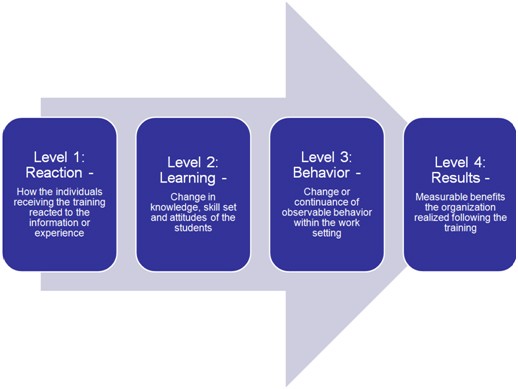Canadian Occupational Safety - March 2011
By: Shawn M. Galloway
Printable Version
Like training, a communicated message, regardless of intensity, is only as effective as the reinforcement that follows it. This also holds true for the critical role communication plays in safety. Communication, by nature, is hyper-competitive. Safety has information to share; as does quality, production, Human Resources, Payroll, Customer Service, etc.
In his book, Love is the Killer APP: How to Win Business and Influence Friends (2002), Tim Sanders proposed a new metric, Return on Attention (ROA), when he stated, "There's nothing more valuable than attention: this was true a hundred years ago when people spent their Sunday mornings over coffee reading newspapers filled with ads, and it's true today when attention is scarcer than ever because we have so many more places to allocate it - print media, radio, television, our computer screens. So if you think getting good ROI - Return on Investment - is important, you should also be thinking about ROA, or Return on Attention." (47)
We, too, should be striving for measurable ROA when we communicate something as important as safety. While it is important to communicate values and other critical organizational issues and their impact on safety, we should consider determining what return the organization is experiencing as a result of the employee attention that was given to the message. Dr. Daniel Denison said it best, "It's amazing how much time corporations spend articulating the CEO's values and vision and how little time they spend trying to understand if anyone got the message."
Applying Training Effectiveness Validation to Communication
During the mid 20th century, as experts throughout the world were looking to improve the effectiveness of training, one individual stood out. Dr. Donald L. Kirkpatrick has become one of the most frequently cited experts on training effectiveness. Dr. Kirkpatrick's simple four-level model, originally proposed in the late 1950's, provided a simple and easily measurable approach to determine the effectiveness of training (see figure A).
Following some recent projects, value has been recognized when applying Dr. Kirkpatrick's four-level model to measure the effectiveness of safety communication. The goal is to ensure effective communication, define the desirable outcomes for each level prior to simply sharing the message, or training with new information.
Figure A.

Communication Levels of Effectiveness
Level One: Reaction - Do employees react to a message communicated to them? Do they have an emotional perspective that would be important to understand prior to expecting them to adopt the communication or information they are being trained upon? How, specifically, do you want the employees to react? Anticipating this in advance will help you frame the message appropriately, and choose the right words.
Level Two: Learning - If the goal is knowledge transfer, how will you validate that the message left your mind and entered theirs? The human brain is constantly struggling to filter out unnecessary information. If the goal is to learn something, how do you validate the knowledge now resides in them? Are you testing for memory or competency? The human brain tends to max out between four and seven bits of information in the working memory. Ensure the message or training has a few key points that facilitate memory recall. Moreover, people will remember stories and pictures more than facts and figures. Consider leveraging this when sharing details. If you have three key points that are shared in a meeting or posted on a bulletin board, consider randomly asking employees what they can recall from the message.
Level Three: Behavior - All training should have a defined behavioral objective either targeting changing or perpetuating existing behaviors. If your safety communication is a call to action message, or information that tells people what to do in safety, (i.e., communicating a recent incident and the precautions identified that would help minimize the chance of a reoccurrence, etc.), what specifically will be observable upon the conclusion of the training? In advance of the message, identify the behavioral goal and a plan to observe for visibility with the intent of providing feedback to reinforce the importance of the message.
Level Four: Results - Whether knowledge, behaviors, or a change in perceptions, we are all targeting some sort of result when communicating a message to an audience. Define in advance how the message would be measurable in results terms. For example, if the purpose of communication is to change perceptions, consider measuring perceptions before and after the message event. This does not require a formal survey; informal focus group discussions often suffice. True results become cultural. When they become part of the shared values, perceptions, and common-practice reinforced behaviors, they sustain. Remember ROA. If you are able to capture the attention of individuals, how would you measure the return on this attention?
Conclusion
Consider applying this model to your safety communication by answering the questions and remembering the principles within each level. While this will certainly improve the effectiveness of safety communication, it is not realistic to vet every message that needs to be sent, nor every single item someone will be trained on. If the strategies you employ are not sensible, they will not be implementable. Be practical in your application because anything that makes communication more difficult or inconvenient will not be sustainable.
Start with the most important items first. After realizing progress through positive reaction, measurable retention, observable behaviors, and improved results, make a decision on what areas in communication and training could be further improved. As the French Philosopher, Voltaire, said, "Don't let the perfect be the enemy of the good." Don't wait until you can effectively communicate all messages. Sometimes a "good enough" approach is quite sufficient; just realize this might not ensure the return on attention necessary.
 Shawn M. Galloway is the CEO of ProAct Safety and co-author of several bestselling books. As an award-winning consultant, adviser, leadership coach and keynote speaker, he has helped hundreds of organizations within every major industry to improve safety strategy, culture, leadership and engagement. He is also the host of the highly acclaimed weekly podcast series Safety Culture Excellence®.
Shawn M. Galloway is the CEO of ProAct Safety and co-author of several bestselling books. As an award-winning consultant, adviser, leadership coach and keynote speaker, he has helped hundreds of organizations within every major industry to improve safety strategy, culture, leadership and engagement. He is also the host of the highly acclaimed weekly podcast series Safety Culture Excellence®.
For more information, call (936) 273-8700 or email info@ProActSafety.com.
